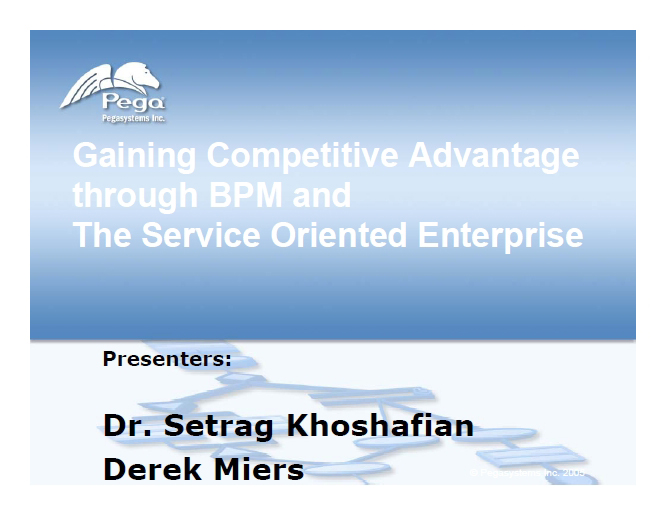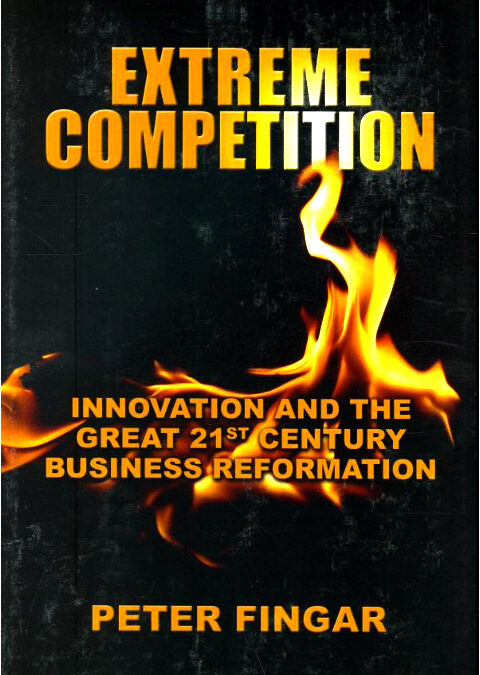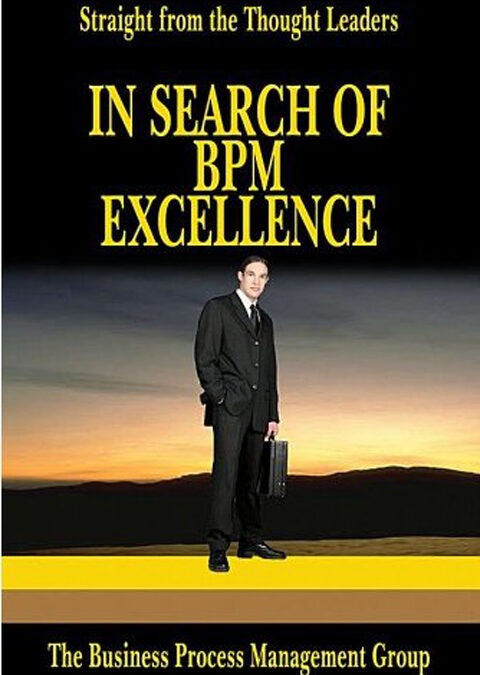Home / Resources
Resources
Discover a Wealth of BPM Knowledge and Expertise at BPMInstitute.org!
Rhode Island Devises a Blueprint for Change
Founded in 1643, the State of Rhode Island was the thirteenth colony to ratify the U.S. Constitution. Now known as the “Ocean State,” Rhode Island has approximately one million citizens. With 140 state and quasi-public agencies including 15 to 20 major agencies, the state has approximately 15,000 employees, with 10,000 in the executive branch. The state’s annual budget is around $6.5 billion.
In 2003, the state was running a budget deficit of approximately $180 million.
Case Study: Using ISO 9001 Quality Management Standards to Achieve BPM Objectives
The Logistics Management Division for NASA includes the Wallops Island Facility, Goddard Space Flight Center, and NASA Headquarters. It has four branches, 50 civilian servants, and 225 contractor personnel. The division has 12,000 Civil Service and contractor personnel. The flight project support operations are ISO 9001 certified, with the processes fully documented. For the institutional support services, the processes are documented in Standard Operating Procedures (SOPs). The goal was to be certified by August, 1999.

Gaining Competitive Advantage through BPM and The Service Oriented Enterprise
The Service Oriented Enterprise is a new approach in business. Each party or participant in service orientation sees themselves as a service provider and consumer, in an increasingly well connected global economy. This is not new: businesses have been serving their clientele since time immemorial. But service orientation is different in two essential ways. First, culturally organizations are realizing the best productivity could be achieved if they focus on serving the needs of their customers but also their employees, trading partners, shareholders, government, and communities.
BPM and Financial Services
This webcast – the fifth in a five-part series – will review the findings of BPMInstitute.org’s State of Business Process ManagementSM Research with a specific focus on the issues, challenges and solutions associated with BPM-applications in the Financial Services sector. It will explain how Financial Services companies are using business process management solutions to drive differentiation and business results by more effectively engaging with agents, brokers, customers and employees.
BPM and Government
This webcast – the fourth in a five-part series – will review the findings of BPMInstitute.org’s State of BPMSM Research with a specific focus on the issues, challenges and solutions associated with BPM applications in the Government sector. It will explore the government desires to streamline the “business of government” under ongoing challenges of budgetary constraints, policy changes and demanding citizen accountability.
BPM and Security: DRM & BPM
This webcast – the third in a five-part series – will review the findings of BPMInstitute.org’s State of Business Process ManagementSM Research with a specific focus on the security issues, challenges and solutions associated with BPM. It will explore the desired integration among Document Security services, Digital Rights Management (DRM) and Business Process Management (BPM). It will describe what strategies are common to enterprises currently achieving the greatest benefit from their Security and BPM initiatives.
The Changing Face of FBI IT
The mission for the FBI has evolved dramatically since 9/11. The FBI is transforming its IT systems to support counterterrorism, intelligence, law enforcement, and administrative missions. BPM is vital to the FBI’s continued transformation and evolution and provides the FBI with a cross-functional view of processes.

The Innovation Imperative Part 3 of 3
According to Business Week’s Bruce Nussbaum, “There is, in fact, a whole new generation of innovation gurus. They are not the superstars of the ’90s, such as Clayton Christensen, who focused on what might be called macro-innovation – the impact of big, unexpected new technologies on companies. The new gurus focus more on micro-innovation – teaching companies how to connect with their customers’ emotions, linking research and development labs to consumer needs, recalibrating employee incentives to emphasize creativity, constructing maps showing opportunities for innovation.”

In Search of BPM Excellence
This chapter argues the use of BPM as the central tool to support next-generation business processes to transform the operations of manufacturers. Next-generation business processes? Dr. Max More, a strategic business futurist, postulates the process-driven enterprise, in the foreword to the book, The Real-Time Enterprise, “The ideal vision of the process-driven RTE is one of companies where information moves without hindrance, and business processes are continuously monitored and trigger rapid reactions, usually automated according to embedded business rules. RTEs also sense shifts in tastes and practices and respond by offering new products and services. Automated processes easily traverse corporate boundaries, time zones, media and systems. Batch processes and manual input are minimized by ensuring that real-time information among employees, customers, partners and suppliers is current and coherent.
Web 2.0 and Brokered Web Services
Web services were created around the notion that it’s easier to discover and leverage somebody else’s service, rather than write your own from scratch. Also, it is much easier to create applications made up of many services, allowing change to occur at a pace faster than anything we’ve seen in the industry thus far.
The idea of Web services was to create a standard interface, programming model, description language, and a directory which would allow this to happen in and between very different systems.
The Forrester Wave™: Enterprise Service Bus, Q2 2006
Cape Clear retains its leading position in Forrester’s latest review of the standalone ESB market. The vendor is one of the pioneers in the enterprise service bus (ESB) category and continues to be among the leaders in technology innovation and strategic vision in this space. Aggressive pursuit of emerging Web services standards and communication protocols, coupled with good tools for developing and deploying services, make Cape Clear a good choice for companies looking for an advanced ESB that can meet many service-oriented architecture (SOA) requirements.

Business Architecture: Where it fits in the Enterprise Architecture
Most organizations routinely overlook Business Architecture. Those organizations that do consider it seem to think of Business Architecture as something distinct and separate from Enterprise Architecture. It is not.
Enterprise Architecture is not about technology; it is about the enterprise—the whole enterprise. It is about the people: internal and external. It is about the business processes: strategic, core and support. And, it is about the technology that supports the people and enables the business.

The Foundation of a Business Architecture
During the past few years research firms have advocated the value and importance of a Business Architecture, and many companies have started building their own. The Business Architecture is found in just about every Enterprise Architecture (EA) framework and one of its many objectives is to better align IT with the business. In June 2006 the first Business Architecture event was successfully hosted by the BPMInstitute and BrainStorm Group in San Francisco.
Case Study: Enterprise-Wide Performance and Business Process Management of Government: Setting the Global Agenda for the Next 10 Years and Beyond
The Florida Department of Revenue has over 5000 employees and a $400M budget. It is the sixth largest agency in the state. The total taxes collected are over $35B for the fiscal year.
The goal of the Department of Revenue’s strategic initiative is to become competitive with world-class organizations in its results and be able to accomplish the mission better than anyone else could. The customers, stakeholders, beneficiaries and suppliers (tax payers) are:
- Policymakers (the Legislature)
- Federal Government
Selecting a BPMS
Dr. Bruce Silver is an independent industry analyst and consultant focused on business process management and content management technologies. He is the author of the 2006 BPMS Report series, evaluations of leading BPMS offerings available free through...

The FBI Launches a Major Business Process Reengineering Effort
Robert J. Garrity Jr., a 29-year veteran of the Federal Bureau of Investigation, is no stranger to solving intricate information infrastructure issues.

When You Say “Process,” You Mean…?
Inside organizations that are doing various kinds of process “work”-whether improvement projects, technology enhancements or process definition and documentation—we often hear a lot of confusion and frustration because people sometimes mean different things when they use the word “process.” The most common frustration happens when two people are talking at different “levels” of process—with one person perhaps talking about a big end-to-end process such as order fulfillment while the other person is talking about a single task but one with multiple steps and considerable complexity—yet both are

BPMS Watch: What BPMS Can Learn from Business Rule Management
One of the core promises of BPMS is that it lets process owners on the business side model, monitor, and maintain their own process implementations. While chronically backlogged IT is hypersensitive to the charge that they take too long to respond to the changing demands of business, it still resists ceding to the business the power to maintain business process solutions themselves, much less build them from scratch. In fact, for many architects and developers the mere suggestion of business-driven implementation taints the whole BPMS concept.
BPM Outside the Firewall
In July 2006, BPMInstitute.org initiated a survey of its 24,000 member community to gain an understanding of how enterprises across a range of industries are pursuing business process innovation and improvement and to what degree these activities are strategically aligned to the companies’ business transformation and growth objectives.
This webcast – the second in a five-part series – will review the findings of the survey, with a specific focus on the issues, challenges and solutions associated with extending business processes outside the firewall to customers, partners and suppliers.

SOA Adoption Should Stimulate Demand for BPM, BAM and BRM
In today's environment, business dynamics and technological innovations have left organizations with a disparate mix of operating systems, applications and databases. This makes it difficult, time-consuming and costly for IT departments to deliver new applications...













